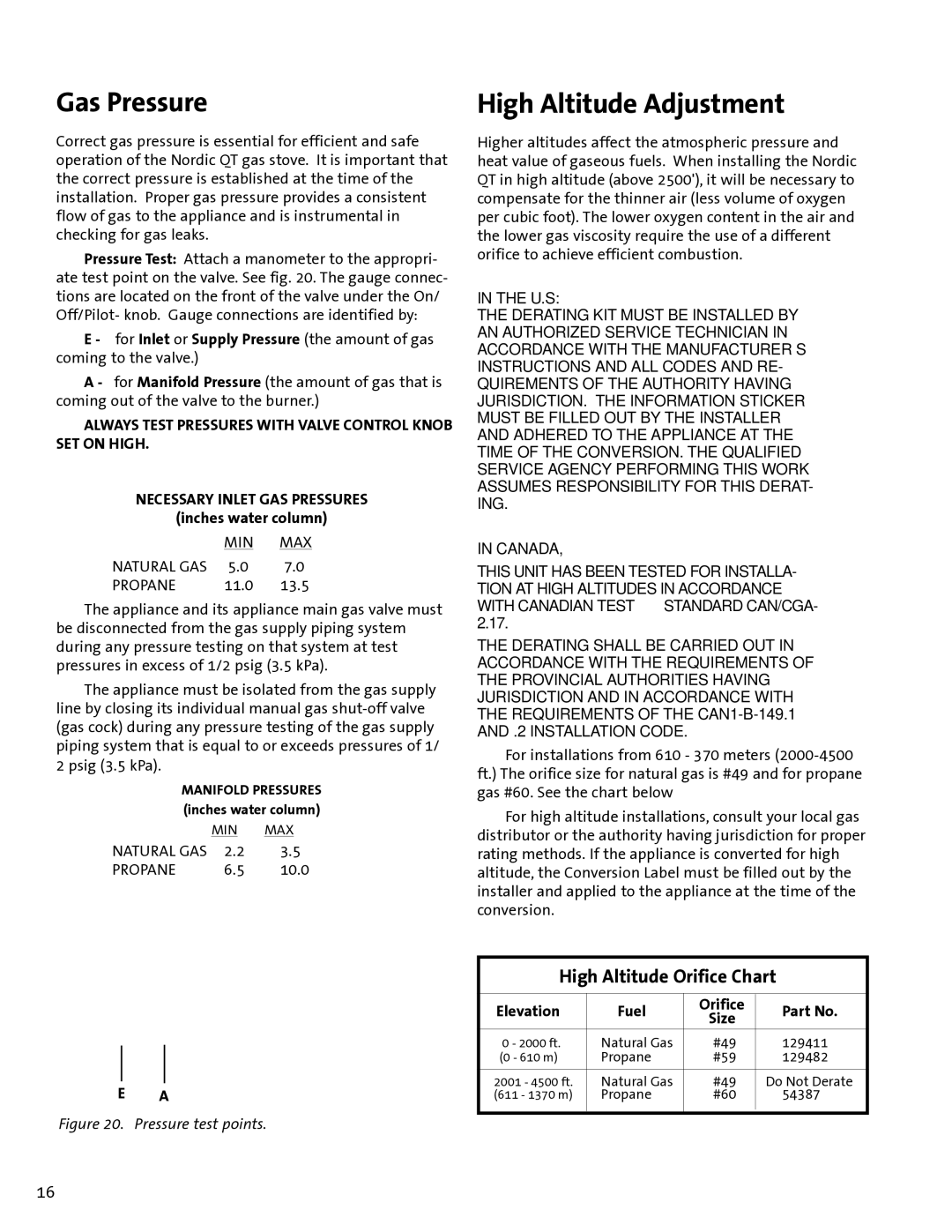GF100 DV specifications
The Jotul GF100 DV is a standout in the world of gas stoves, combining traditional design with modern technology to deliver both functionality and aesthetic appeal. It is a part of the prestigious Jotul lineup, known for its high-quality craftsmanship and reliability. One of the most notable features of the GF100 DV is its impressive heating capacity, designed to warm spaces effectively while maintaining an efficient burn.This model boasts a striking cast iron construction which not only contributes to its durability but also enhances its visual appeal. The classic aesthetics of the GF100 DV allow it to blend seamlessly with various decor styles, from rustic to contemporary. The glass front provides a panoramic view of the flames, creating a warm and inviting ambiance in any room.
The Jotul GF100 DV incorporates advanced gas technology, featuring a direct vent system that ensures optimal efficiency. The direct vent design utilizes outside air for combustion, minimizing drafts and improving indoor air quality. This system allows for versatile installation options; it can be vented vertically or horizontally, making it suitable for a variety of home layouts.
Equipped with a variable flame adjustment feature, the GF100 DV enables users to control the heat output according to their needs. The adjustable thermostat allows for consistent temperature regulation, making it a convenient option for any household. Additionally, the remote control capability adds an element of convenience, allowing homeowners to adjust settings from anywhere in the room.
Furthermore, the Jotul GF100 DV is designed with an impressive efficiency rating, providing peace of mind that you are minimizing fuel consumption while maximizing heat output. This not only benefits the environment but also translates to cost savings on energy bills over time.
The stove is available in multiple finishes, allowing users to choose a look that best fits their home’s interior. Whether opting for traditional black or a more contemporary enamel finish, the Jotul GF100 DV remains a prominent feature in any living space.
In summary, the Jotul GF100 DV is a sophisticated gas stove that blends traditional design with cutting-edge technology. Its combination of aesthetics, efficient heating, and user-friendly features make it a top choice for homeowners seeking both beauty and performance in their heating solutions.

